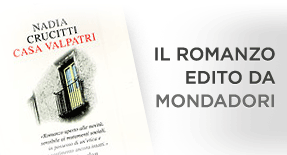Nosside, a voyage to relive the myth
A Greek korè, a terracotta statuette that with delicate plasticity represents a woman seen from behind in the act of lifting the hem of a tunic to avoid tripping. Then, a face showing the hint of a smile as charming and mysterious as the enigmatic smile of the Mona Lisa. There is also a naked young man, a kouros, holding a mirror: These are the bodies and faces of the unforgettable people of Magna Graecia carved in stone, in bronze, engraved on votive tablets or painted on vases, handed down by time. Items buried for centuries by cataclysmic earthquakes, floods, crumbling walls due to wars or ancient neglect, or because of destruction caused by Levantine pirates. For some years, these artifacts have made a fine show at the museum of Locri. They are on display in crystal cabinets together with countless objects of every day life found on the sites. Jewels, now corroded but whose delicate art-work is still visible. Coins; vases, pot-bellied or slender shaped, with red figures depicting domestic and Dionysian scenes; bronze mirrors; toys representing little chariots; astragals of animals used to play the same games we played as children, with walnuts, and small bottles and cruets for the storage of perfumes, small and large amphora for cereals, water, wine, honey, or cider.
As a young girl, in the 60’s, I would go on summer excursions with my parents to the Ionian coast of Calabria. It was always a long trip because in those days, cars were a luxury and then our usual destination was the nearby Pentimele. At that time, the ancient memory of Caulonia and the proud history of Locri were a mystery to me.
In Locri we would stop for an ice cream and I would run on the wide, deserted beach, I would swim and play, unaware that the traces of one of the most powerful cities of Magna Graecia existed behind me.
I took this same cultural path several times as an adult, in search of the atmosphere of the past, to recreate it in a story that had as its protagonist, Nosside, the only female poet of Magna Graecia or, at least the only one whose poems we are able to read today. (Nosside has a cultural association, a primary school and an international literary poetry award, all named after her). She was born at the end of the IV century B.C. in Locri Epizephiri, which was then a city surrounded by a 7.5 km wall; perhaps in the high city, the ancient Epopi, in a large house set out in a rectangular plan around a courtyard. One shivers as one walks along the grassy paths today, these were once roads echoing voices, laughter, shouting, and sounds from the artisan’s stores. It feels eerie to sit at the worn-out theatre steps and imagine them crammed with people silencing the buzz in anticipation of the commencement of the play at the beginnings of sunset, when the actor’s voices would project thanks to the perfect acoustics of the theatre. Sitting there, it suffices to close one’s eyes and imagine Nosside arriving in the crowd followed by a group of beautiful girls, in her role as teacher of dance and ceremonies in honour of the God Dionysus, or as noblewoman, who led a gallant life cultivating the art of poetry. Nobody knows who Nosside actually was, this cultured woman who left us extremely beautiful verses, such as those she dedicated to Rintone of Syracuse, author of hilarious-tragic comedies, for whom, it was clear, she had strong feelings.
Perhaps, Nosside also fascinates me because she is shrouded in the mystery of time, a mystery that will remain eternal. No one will ever be able to describe the beauty of her glance or its haughtiness. Nor we will ever know the real shape of her body or hands. Too many centuries have gone by. Too much time has passed creating differences between her lifestyle and ours. Nonetheless, the places are the same and they preserve the ruins, which bear witness to an ancient world among the scent of citrus flowers and languid warm breezes.
While it is beautiful to imagine her, knowing her real features is not important; a poet does not need a face, his or her poetry is what is essential; the verses in which our being plunges in search of an inner perfection that quells our restless desire for the Absolute.
We can reconstruct the voice and silhouette of Nosside, through the remaining twelve epigrams that can be read in the Palatine anthology and in other translations. Her voice was born out of the first adventurous sea voyages of the Greeks and of the proud splendours of a civilization that knew its magnificence on our shores. Nosside is one of the symbols of that ancient greatness. Refined, subtly inquisitive, to the point of being able to shrewdly reveal, in a single verse, the inner richness of the figures that she outlines, many of whom were her dear friends. She has a kind wish and description for each of them and she highlights their most beautiful qualities. With regard to Callò, her gentleness and charm; Thaumàreta, her delicate and young mirth; Melinna, her sweetness; Sabàithis, her majesty and beauty.
Which woman could sing such sincere praises, if she did not possess within herself the inner qualities that so distinctly she sees in the faces of other women? The epigrams take this form; it is how her femininity is shaped: exquisitely feminine, ready to grasp every nuance of beauty; a lover of everything that inspires emotion, proud of the place that witnessed her birth; the splendid Locri Epizephiri and its valiant inhabitants.
Nosside was therefore a poet of noble descent either preparing for marriage or already married. However, the man who loved her remains a mystery. He eludes us, as do her facial features; our curiosity will never be satisfied. Nosside wrote, “Nothing is sweeter than love: even the sweetest of things comes second”. Neither a name nor a hint of yearning desire born out of a particular glance ever transpire from her verses, perhaps because the epigrams where beloved features are borne from restless sentiment have been lost. A sentiment that perhaps never reaches, the peak of intense passion, nor evokes tormenting mysteries, because Nosside is a strong and self-assured woman. She observes and captures beauty with extreme precision from wherever and however it flows.
We are led to these conclusions by the elegant tone transpiring from the verses of this ancient inhabitant of Locri, whom whilst being admired, depicts the gentleness of a glance or the magnificence of a golden statue. This is especially described by her most famous epigram: “Friend, if you sail towards Mytilene, with its beautiful open views, land of Sapphus who gathered the flowers from the Muses, tell them how the land of Locri gave birth to me, dear to the muses and that my name is Nosside, now go!” One notices overall, an air of calm superiority, a serene voice, indifferent to any judgment, the voice of a woman proud of her art, intimately aware of her poetic creativity.
The voice of a woman capable of furthering herself intellectually, and whose creativity leaves her feeling totally satisfied. Nothing troubles her majestic serenity and nothing appears more important to her than the need to bear witness both to her being “dear to the muses” and her belonging to the Hellenic race of Locri Epizephiri.
There, where even today, among African coloured beaches, ancient Greek memories continue to echo.
written by Nadia Crucitti
translated by Martino de Marco


